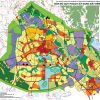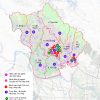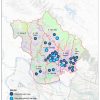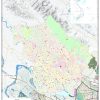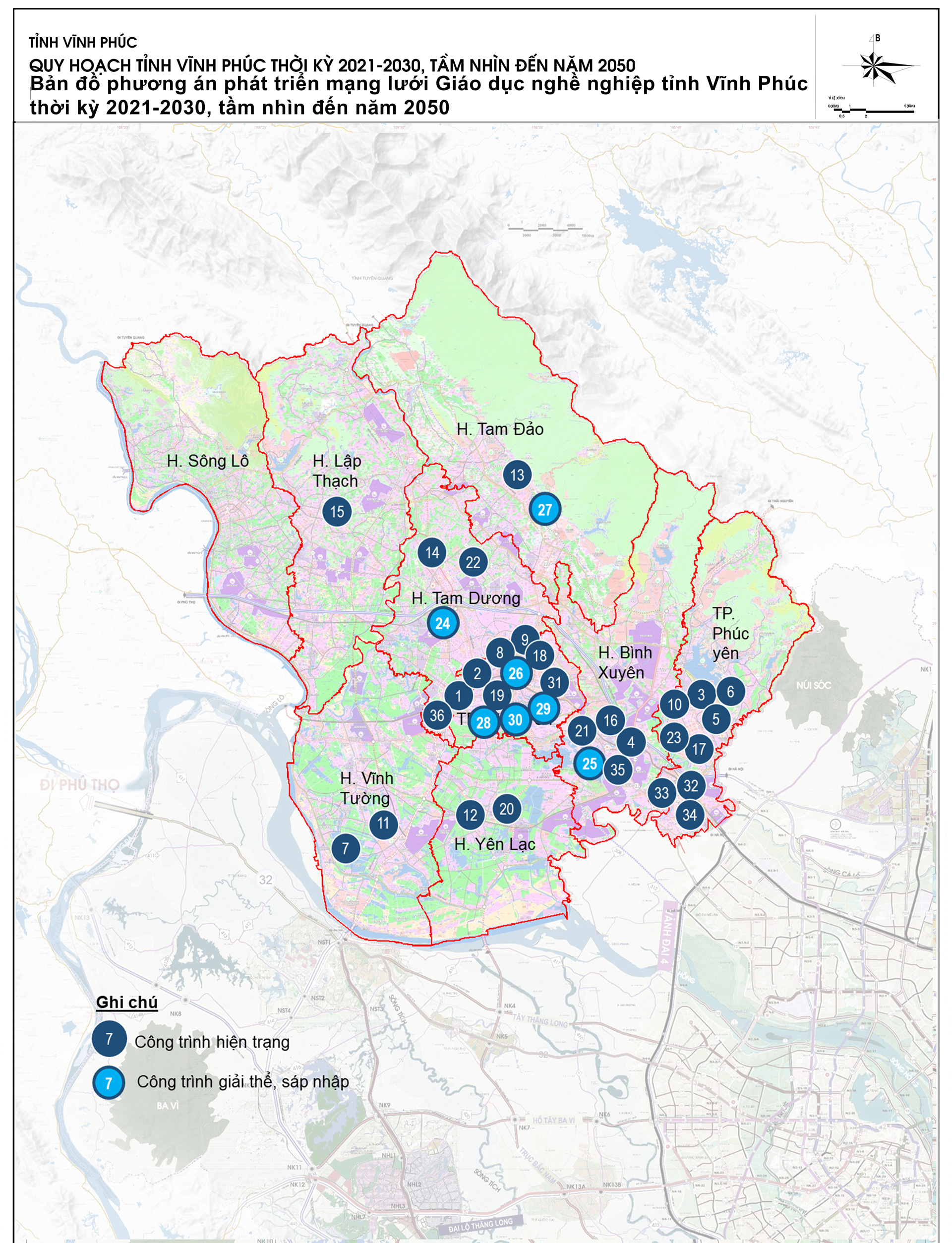
Education and Training
Preschool Education: As of the 2020-2021 academic year, the province has 177 preschools, including 163 public schools and 14 private schools. The total number of classes in public preschools is 3,300, including 695 nursery classes and 2,605 kindergarten classes. There are also 221 private preschools with 829 groups and classes. The total number of preschool-aged children attending classes is 83,833, with 69,589 children in public kindergartens. The number of children in private preschools is 14,999. The province currently has 43 preschools dedicated to ethnic minority children, with 567 groups and classes, and a total of 4,535 children attending classes. The attendance rate of kindergarten children from ethnic minority groups is 98.4%, while the attendance rate of preschool children is 36.2%. The number of children with disabilities participating in inclusive preschool education is 92 out of 94 children, accounting for 97.9% of the total number of children with disabilities of school age (0.1% of the total preschool-aged children).
General Education: The scale of the general education network is maintained stable to meet the learning needs of students.
– Primary Education: In the 2020-2021 academic year, there are 145 primary schools in the province, and all schools are public. All communes/wards have primary schools, with a ratio of 1.05 schools per commune. There are a total of 3,682 classes and 125,593 students, with an average class size of 34.1 students. Enrollment at the beginning of primary education is well implemented, with 100% of 6-year-old children enrolled in Grade 1. The enrollment rate of students attending primary school at the appropriate age in Vinh Phuc is 99.52%. The rate of integration of students with disabilities into regular schools is 98%.
– Lower Secondary Education: There is a total of 148 public schools (including 132 lower secondary schools, 16 inter-level schools that offer both primary and lower secondary education. The ratio is 1.08 schools per commune. There are a total of 2,032 classes and 79,033 students, with an average class size of 39.0 students. The enrollment rate of students in Vinh Phuc attending lower secondary school at the appropriate age is 96.45%. The development of lower secondary schools provides opportunities for students in the school-age group and meets the increasing demand for education (100% of students completing primary education enter Grade 6 of lower secondary school).
– Upper Secondary Education: The province has 30 upper secondary schools, including 29 public schools and 1 private school. There are a total of 819 classrooms, including 813 public classrooms and 6 private classrooms. The total number of students is 32,220 (32,018 public school students and 182 private school students). The average class size is 39.4 students per class, with a ratio of 3.33 schools per district or city. The enrollment rate of students attending upper secondary school at the appropriate age is 98.7%. The enrollment rate of students aged 6 to 18 attending schools in the province is 97.1%.
According to statistics, on average, it is estimated that more than 1,800 children with disabilities participate in general education each year (66.9% at the primary level, 23.7% at the lower secondary level, and 1.9% at the upper secondary level). Most of them have mild disabilities and are integrated into local schools that accept students with disabilities. Most of these children, who have severe disabilities, face significant challenges in their integration into education due to the limited quality of support and services provided, especially for those with limited self-care skills and behavioral issues. Currently, Vinh Phuc does not have a Development Support Center for Inclusive Education, nor does it have a system of support in secondary schools with students in inclusive education.
Continuing Education: The province has 08 centers for continuing education (01 provincial-level center and 07 district-level vocational-continuing education centers). There are 136 community learning centers, 80 foreign language and computer centers, 15 life skills education centers, and 17 licensed study abroad consulting service providers. In addition, there are 06 colleges that offer continuing education programs for high school students.
The Education sector in the province has strictly followed the guidance for student streamlining after lower-secondary education, resulting in a significant increase in the number of students attending continuing education centers. In the 2020-2021 school year, there were 260 classes (an increase of 197 classes compared to 2010) with 9,895 students (an increase of 5,305 students).
Vocational Education and Higher Education: As of May 31, 2021, there are 07 colleges (3 provincial-level colleges and 04 colleges under Central Government ministries), 03 intermediate vocational schools (private), 20 vocational education centers (10 public centers, 09 private centers, and 01 FDI center), and 06 other vocational education institutions (02 universities, 02 branches of colleges headquartered in other provinces, 01 enterprise and public institution with vocational training). Of the 28 vocational education institutions under provincial management, there are 13 private institutions, 01 FDI institution, and 14 public institutions.
Regarding the scale of the network of universities in Vinh Phuc province, from 2015 to 2021, there has been no change, and all universities are under the management of the central government. There are no local universities in Vinh Phuc province. Currently, Vinh Phuc has 03 universities (02 Pedagogical universities, 01 Armor Officer Training School), and 2 branches of universities in Hanoi (Transportation University and Hanoi Architectural University). These universities and their branches are located in 4 districts/cities: Vinh Yen (1), Phuc Yen (2), Tam Duong (1), and Tam Dao (1). Of these, 4 universities on the province’s territory are public, and only 1 is private. These universities have also contributed to training a high-quality workforce for Vinh Phuc province to meet the demand of the local labor market.
